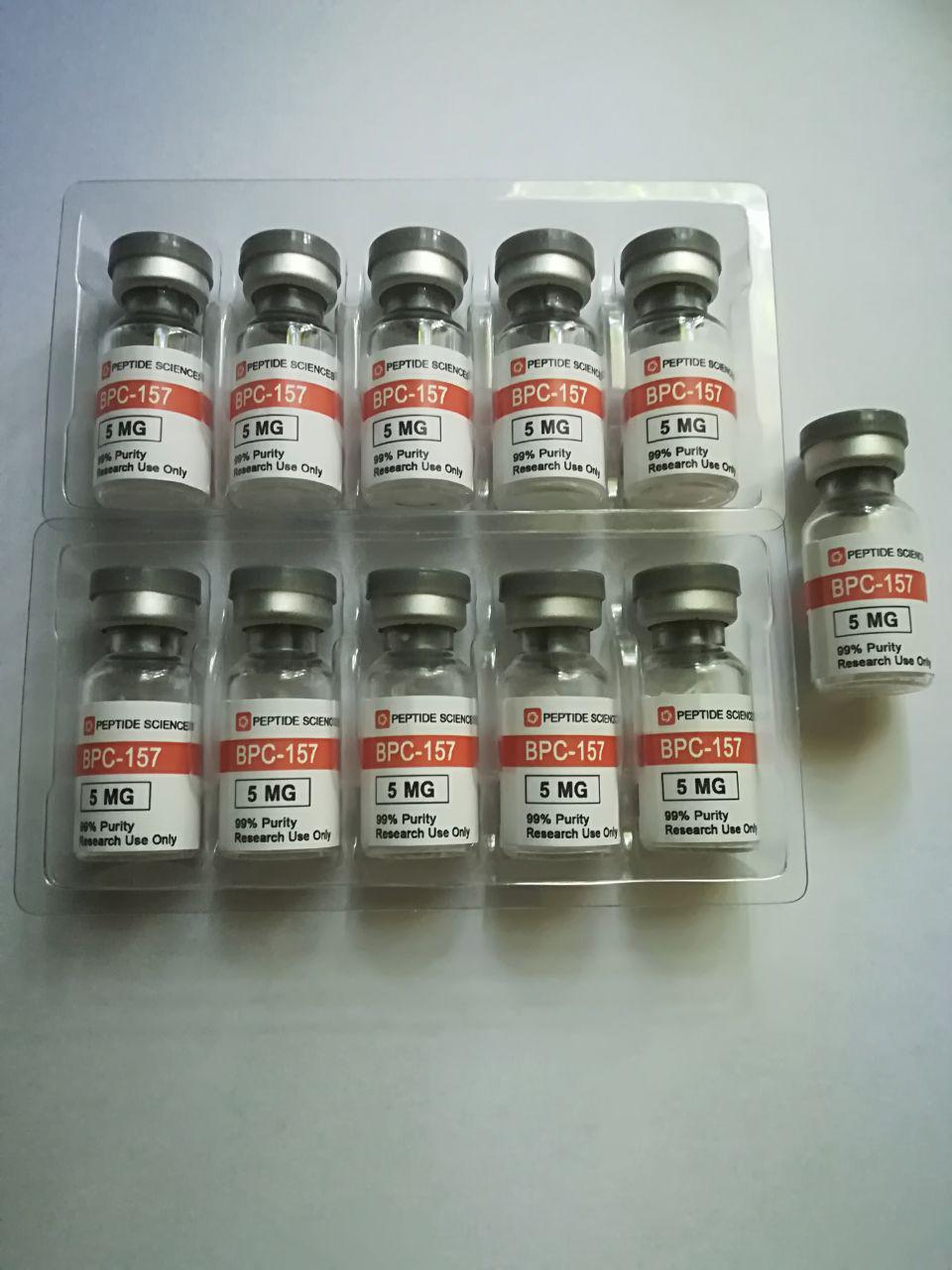
August 16, 2024
Bpc 157 And Capillary Bentham Scientific Research
2024 The Best Bpc-157 Powder Provider Pdf The primary metabolite, [3H] proline (M1), accounted for 4.96% (woman) and 3.93% (man) of the bile samples (Number 5C). Percentages of [3H] BPC157 were discovered in feces, accounting for 0.63% (woman) and 2.26% (man) of the overall fecal radioactivity. The tritium water content was 30.1% (woman) and 29.3% (man), and the web content of [3H] proline (M1) was higher, making up 20.7% (woman) and 30.2% (man) of the overall radioactivity (Number 5D). The contents of other metabolites in feces were all lower than 0.06% of the administered quantity, and it was impossible to do structural recognition because of the very low web content. These outcomes suggest that BPC157 was rapidly metabolized right into reduced degrees of a selection of tiny peptide pieces, ultimately leading to a single amino acid represented by [3H] proline, which went into the normal amino acid metabolic rate and excretion path in the body.Effect Of Photodynamic Treatment On Regional Muscle Therapy In A Rat Muscle Injury Design: A Controlled Test
Contrarily, in rats with high intra-abdominal stress, the application of BPC 157 had a significant therapeutic result. For this impact, in all BPC 157-treated rats, the usual essential finding may be the swiftly triggered azygos vein security path, which integrated the substandard caval vein and left exceptional caval capillary, to reverse the fast presentation of this lethal disorder. We exposed that, regardless of completely boosted intra-abdominal high blood pressure (grade III and quality IV), a treacherous syndrome happened peripherally and centrally, the reversal of the stomach area syndrome caused by the steady gastric pentadecapeptide BPC 157 application was rather regular. With continual boosted intra-abdominal stress and pentadecapeptide BPC 157 application, otherwise impending stomach compartment syndrome (i.e., 25 mmHg or 30 mmHg, or 40 mmHg or 50 mmHg for 25, 30, and 60 minutes (thiopental) and for 120 min (esketamine)) did not show up. This was seen with the portal, caval, aortal, and superior sagittal sinus stress assessment, minimized major ECG disturbances, nearly abrogated arterial and blood vessel thrombosis, and managed discussion of the brain, heart, lungs, liver, kidneys, and gastrointestinal tract, with no lethal results regardless of the long-term maintenance of high intra-abdominal stress.Stable Gastric Pentadecapeptide BPC 157 Therapy for Primary Abdominal Compartment Syndrome in Rats - Frontiers
Stable Gastric Pentadecapeptide BPC 157 Therapy for Primary Abdominal Compartment Syndrome in Rats.

Posted: Sun, 12 Dec 2021 08:00:00 GMT [source]
Bpc 157's Benefits: Past The Restriction
In the 2nd protocol, HUVECs (4 × 104 cells per well) in full media were at the same time seeded with DMSO or BPC-157 (1 μg/ mL, 5 μg/ mL, and 10 μg/ mL) in matrigel-coated plates. The encased networks of tubes were photographed 12 hours later on using Canon PowerShot A640 camera on Zeiss upside down microscopic lense with × 100 magnifying. The setting of the cells in the cell cycle was determined by circulation cytometric analysis of the DNA material making use of propidium iodide. The cells were accumulated after treatment, cleaned twice with cool phosphate-buffered saline, and treated with 1 mL of chilly citrate buffer (0.24 M sucrose, 40 mM sodium citrate, pH 7.6). Consequently, 0.4 mL of a PI staining/lysis solution (0.5% NP-40, 0.5 mM ethylenediaminetetraacetic acid [EDTA] and 50 μL of RNase A (10 mg/mL in Tris-- EDTA barrier, pH 8.0) remedy were added. Each function was appointed a score from 0 to 3 based upon its absence (0) or visibility to a moderate (1 ), modest (2 ), or extreme (3) level, and a final histology rating was figured out Helpful hints (Murao et al., 2003). Liver and spleen weights are expressed as a portion of complete body weight (for regular rats, liver, 3.2-- 4.0%; spleen, 0.20-- 0.26%). ECGs were videotaped continually in deeply anesthetized rats for all 3 primary leads, by positioning stainless-steel electrodes on all 4 arm or legs using an ECG monitor with a 2090 developer (Medtronic, United States) connected to a Waverunner LT342 electronic oscilloscope (LeCroy, USA) at 30 minutes ligation time. This plan enabled specific recordings, measurements, and analysis of ECG specifications (Vukojevic et al., 2018; Gojkovic et al., 2020; Kolovrat et al., 2020; Gojkovic et al., 2021a; Knezevic et al., 2021a; Knezevic et al., 2021a; Gojkovic et al., 2021b; Knezevic et al., 2021b; Strbe et al., 2021). Pharmacokinetic criteria were reviewed using the WinNonlin software (variation 5.3) according to a non-atrioventricular version. Straight regression was checked out between AUC worths acquired after BPC157 IM management and BPC157 doses and in between Cmax values and BPC157 dosages.- As abdominal area disorder brings about body organ failure at an intra-abdominal pressure of 20 mmHg (Hunter and Damani, 2004; Hedenstierna and Larsson, 2012), to examine the degree of intensity that can be treated with this therapy, greater intra-abdominal stress of 25, 30, 40, and 50 mmHg were additionally made use of.
- Recordings of brain swelling were carried out in rats before sacrifice after total calvariectomy was done (Gojkovic et al., 2021a; Knezevic et al., 2021a; Knezevic et al., 2021a; Knezevic et al., 2021b).
- In contrast, it is possible that the management of BPC 157 counteracts these disruptions to cause significant functional recuperation.
- BPC 157 works without a service provider, and it is presently going through tests for inflammatory digestive tract illness, and no poisoning has actually up until now been reported.
- This location of research study is specifically intriguing provided the recognized interactions in between gastrointestinal health and emotional well-being.
What organs does BPC 157 heal?
Research studies carried out in rodents and cultured cells have actually suggested that BPC-157 may support the recovery of various tissues, consisting of tendons, joints, nerves, the digestive system, the belly, and skin. What are BPC-157''s major drawbacks? BPC-157''s prospective disadvantages doubt, given the lack of human proof.

Social Links